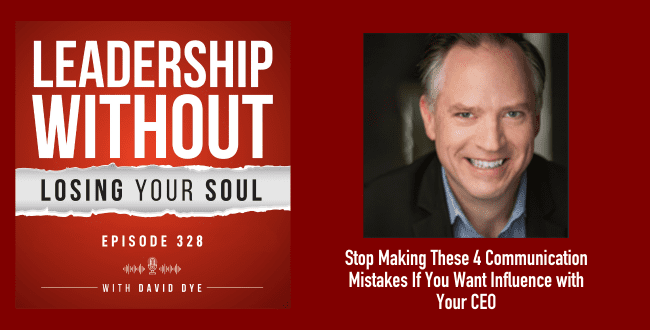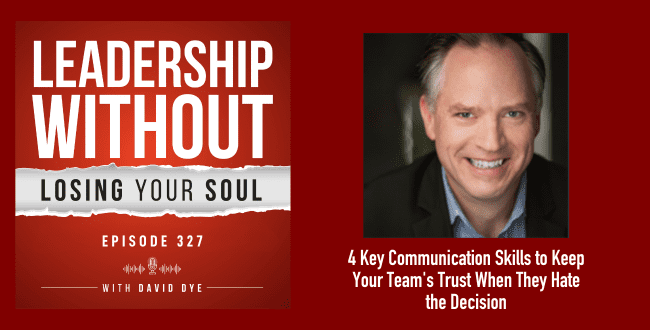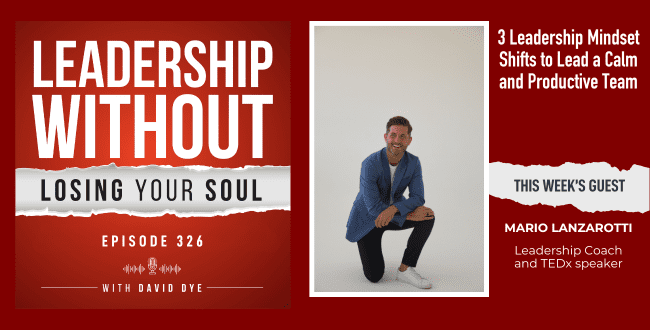If you don’t pay enough attention to strategy, you and your team will end up lost in a wilderness of meaningless, unproductive busyness. But if you don’t pay enough attention to tactics and effective management, you’ll create needless conflicts, frustration, and hurt feelings. When you can embrace effective leadership strategy and tactics, they will work together to help you, your team, and your organization thrive.
We have a, a fantastic question coming up, uh, at the end of today’s episode as well. But we’re gonna start with a conversation about strategy and tactics, because leaders and managers can often struggle with the difference between strategy and tactics or vision and operations. And, and it’s not uncommon for people to glorify leadership over management or strategy over tactics. But the reality is there’s danger in over emphasizing one or the other.
This past fall, as I was training for an ultra-marathon I went for a really long trail run and it was on terrain that was rocky, and there were roots snaking across the trail. So I was really focused on the ground and making sure that I wasn’t tripping over anything. Then I was catching up with two women who were on the trail ahead of me so I called out to them, “Hey, I’m passing on your left.” I focused on the trail ahead where I would pass them, sped up, and that’s when a root caught my foot and I tripped and fell down in a glorious pile of dirt, blood and embarrassment. In looking at the trail ahead, I lost focus on the ground beneath my feet, and that’s the danger of focusing on strategy or vision. The trail ahead, to the exclusion of the operational and management realities that you face today, that is the ground beneath your feet.
What are some tactical questions that can help you avoid injury? A couple of these are the categories of clear communication, shared understanding of success, healthy professional relationships, consistent accountability. When you’re lacking those elements, your team will experience the injuries of frequent conflicts, frustration, misunderstandings that derail productivity, and quench morale.
Here are some questions that you can use to focus on tactical aspects of your leadership strategy. Does everyone know what success looks like? Does everyone know what specific behaviors are critical to achieving that success? Have you checked for understanding to ensure everyone has the same understanding of what success looks like and what those behaviors are? Are you consistently communicating critical messages and concepts? We talk about five by five. That’s five times five different ways, using five different channels to communicate and make sure messages are getting internalized. Are you scheduling the finish with clear discussions and mutual appointments to conclude tasks and projects? Do you and your team hold one another accountable for commitments? Do you acknowledge and celebrate success? Does your team know how to discuss and resolve day-to-day conflict? Dropped balls, misunderstandings? These are the tactical communication elements that will help you to stay focused on the ground underneath your feet and keep you from tripping.
All right, so let’s get back to that trail. So I had fallen, I got up, I brushed myself off, and I kept running. About 12 miles later, I took a new trail I’d never explored, and I was determined not to fall again. So I was watching the ground very closely. And when I reached the end of the new trail, I turned around, I’d been counting the number of branching trails I’d passed and thought I could easily get back, but I was tired. I had not looked at a map, and I’d been watching the ground so closely that I had not paid enough attention to my surroundings, took a wrong turn, and I had lost track of where I was and where to go. And that’s the danger of focusing on tactics and operations, the ground beneath your feet, and excluding of strategy and vision, which is the map and the trail ahead.
Your strategic clarity and vision is looking at the map and understanding the big picture, why you’re doing what you’re doing, how your team’s work contributes to the whole. In addition, a shared vision, that picture of where you’re going and what it feels like to get there inspires and energizes your team. And when you lack those elements, your team gets lost in busyness. Their work might be precise and done well, but it’s not necessarily meaningful. It doesn’t move the team, or outcomes, forward. And that type of meaningless work SAPs morale and wastes people’s time and energy, and those are precious resources.
Here are several questions to help you avoid getting lost in unproductive work as you focus on the first elements of leadership strategy and tactics. Why do we do this? And ask again, up to five times, why do we do this? What’s the real purpose? What’s our organization or team’s purpose? Do we have a shared vision of success for our team? That is, what does it look like, feel like, and what’s happening when we are at our best and doing our best work? How does our work contribute to the bigger picture? And that bigger picture can be your customer, the organization or society beyond the business, what’s changing in the world, your industry, technology employees or your customers so that you can understand and respond. How will your customers, clients, or world be better because of the work that you do?
So many leaders and teams get into conflict as they struggle with the need to look at the map and focus on the ground beneath their feet. And the reason for these disagreements is that most of us have a natural tendency to focus on one direction or the other. Some people are natural visionaries. They’re looking at the horizon they’re seeing into tomorrow, and inspiring people to come on the journey with them. Other people are naturally good at operations and ensuring everyone’s on the same page connected with one another and doing their work well. And obviously, you need both for any organization to do meaningful work and make a difference. What’s obvious and self-evident for you won’t be so clear for your colleague who has a different gift. In most discussions, the best way to resolve the tensions between leadership strategy and tactics is to start with strategy.
Where are we going? Why are we going there? How will our customer or client be better off as a result? And once you’ve clarified those goals, then focus on how you’ll achieve it and the leadership practices that will help the team operate smoothly. So in your own leadership, commit to a weekly habit of strategy and tactics. If you’re strong, tactically, schedule time with yourself at the beginning or end of the week to reexamine why you’re doing the work you’re doing to pull your head up, look at the horizon and ensure that what you’re doing aligns with the bigger picture. And if you’re stronger, strategically, more, more prone to looking at vision, schedule that time to ask the tactical questions and ensure that you haven’t let communication or accountability lapse while you’ve been looking at the horizon.
So as we start the new year, there’s some suggestions on strategy and tactics and how to incorporate to make sure that you are getting the best of both and not tripping on one or the other.
Listen in on the podcast to hear a question that came in this week, which I thought was a really powerful question, and one that if you haven’t experienced, you’ll certainly have the possibility of it at some point in your career. And thanks again for starting a new year with us. If you’ve been in real time and either way, appreciate you being here, talking about leadership strategy and tactics. And as you head off, keep in mind that mutual focus on leadership strategy and tactics will help you and your team to do motivating, meaningful work without unnecessary morale, sapping, frustration. And of course, I would love to hear from you your thoughts on balancing leadership strategy and tactics, ensuring you don’t lose focus on one or the other. Don’t want to trip. Don’t want to get lost. All right, that’s it for today. Get out there, be the leader you’d want your boss to be, and we’ll see you next time.









0 Comments